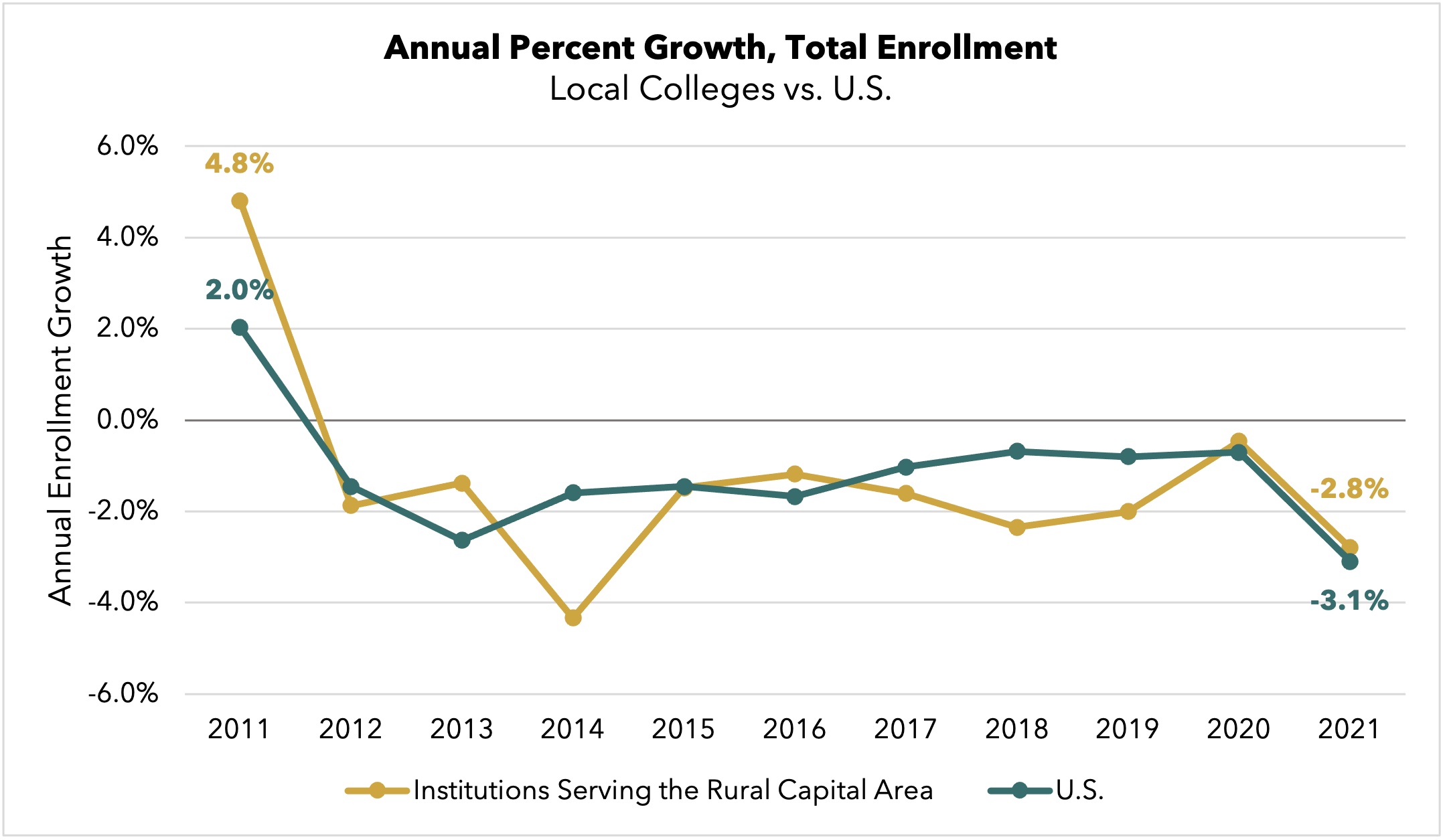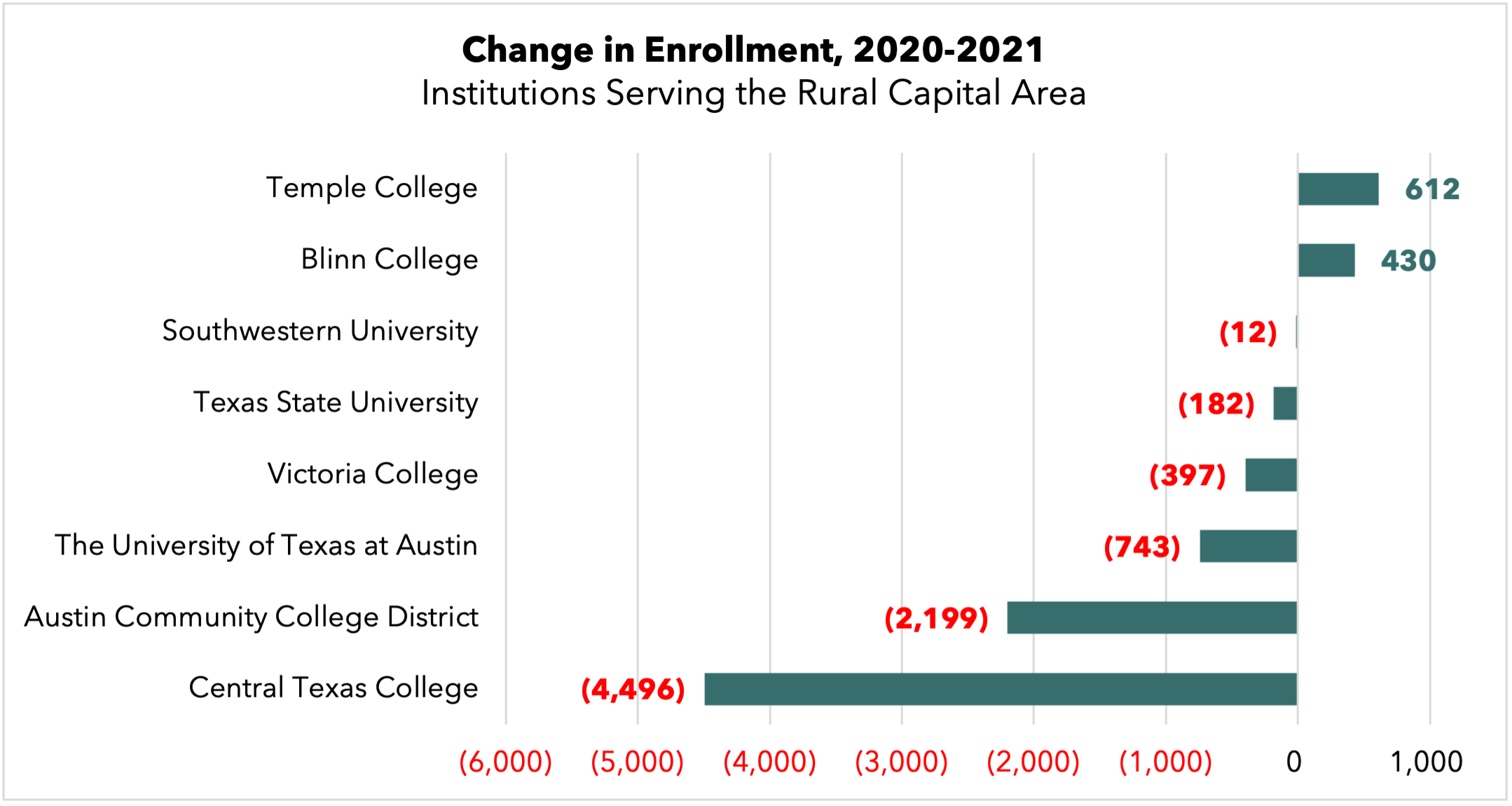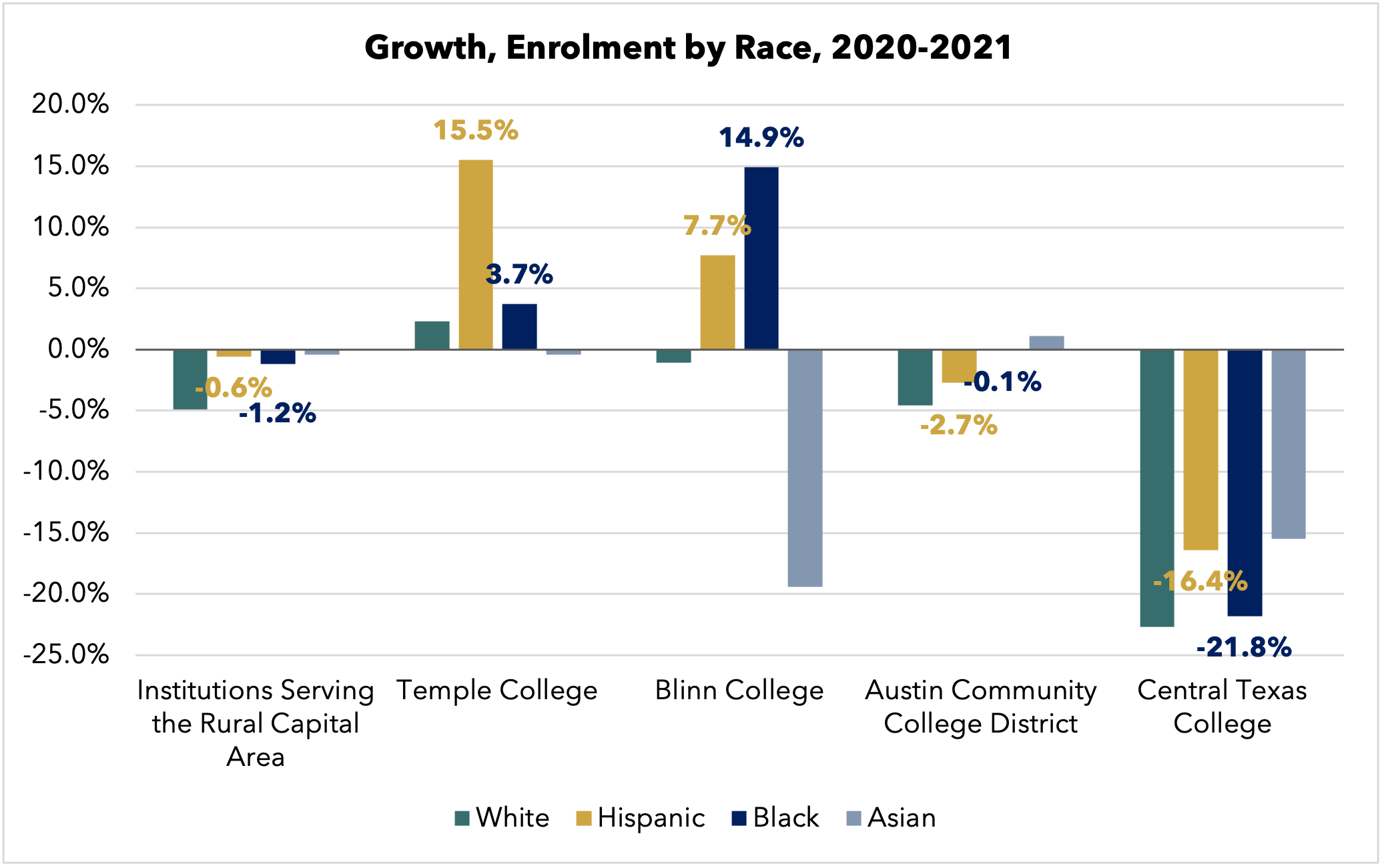Previous analysis from June 2022 showed that college enrollment, both in the Rural Capital Area and across the United States, consistently fell from 2012 to 2020. Every year enrollment at institutions serving the RCA (from here forward, referred to as local colleges) shrank by anywhere from 4.3 to 0.5 percent.
There was hope the 2021 would bring a reversal of this trend. Typically, during economic downtowns college enrollment increases as many individuals put off searching for jobs and head back to school. For example, after the Great Recession of 2007-2009, there was a 33 percent increase in enrollment at two-year colleges from 2006 to 2011. It was possible that the Covid-19 induced recession would similarly inspire people to return to school during a time of extreme labor market uncertainty.
However, recently updated dashboards with 2021 data show that instead, the Covid-19 pandemic only accelerated the drop in college enrollment rates. From 2020 to 2021, RCA college enrollment saw the second largest decline in a decade, falling 2.8 percent. United States enrollment shrank by 3.1 percent, the sharpest drop in the same time period. It appears that, rather than waiting out economic instability by investing in education, individuals across the country took advantage of the high demand for workers and ability to demand higher wages from employers. The chart below shows the most recent data on college enrollment rates.

Similar to trends reported in June 2022, some local colleges managed to buck the trend and increase enrollment in the current environment. Enrollment at Temple College grew +8.7 percent (612 students more students enrolling in 2021 than 2020) and Blinn College grew enrollment +1.5 percent (430 more students). Outside of these two institutions, the picture was fairly grim. The chart below shows these values and the shortfall in enrollment for other institutions such as the Austin Community College District (the largest college in the region by total enrollment).

Finally, as demographics across the country shift, especially among younger generation, enrollments by race suggest that schools bucking the trend are those that specifically increased enrollment for students of color. For the two colleges that increased enrollment, Hispanic and Black enrollment rates increased greatly. For the two schools that saw the greatest declines in enrollment, the Austin Community College District and Central Texas College, enrollment fell across almost all demographic groups. See the chart below.

Preliminary, national level findings suggest the overall declines continued during fall enrollment in 2022. NPR reported that, according to preliminary data, “U.S. colleges and universities saw a drop of just 1.1% of undergraduate students between the fall of 2021 and 2022. This follows a historic decline that began in the fall of 2020; over two years, more than 1 million fewer students enrolled in college.” It is too soon to know how this data will shake out for local colleges, but if the last decade is any indication, higher education institutions across the country are having to reevaluate their value proposition and expand accessibility beyond traditional first-time college enrollees straight out of high school.